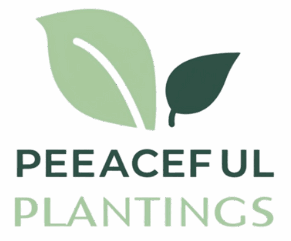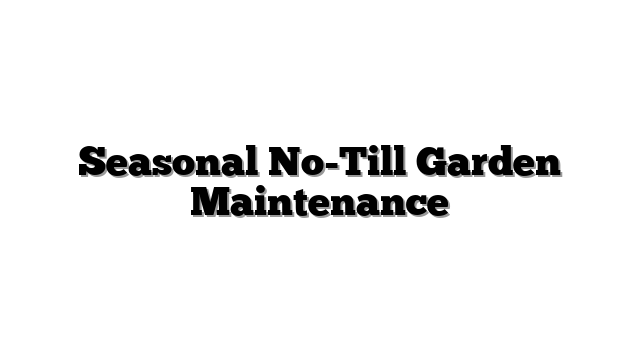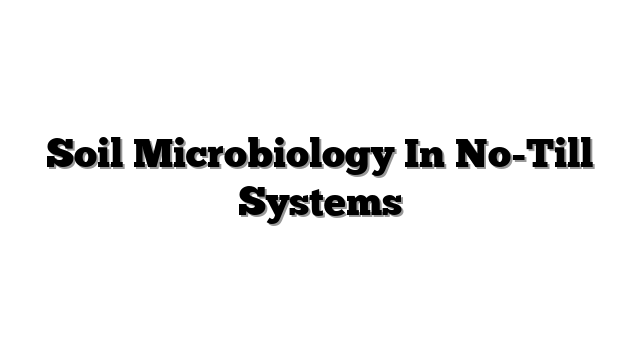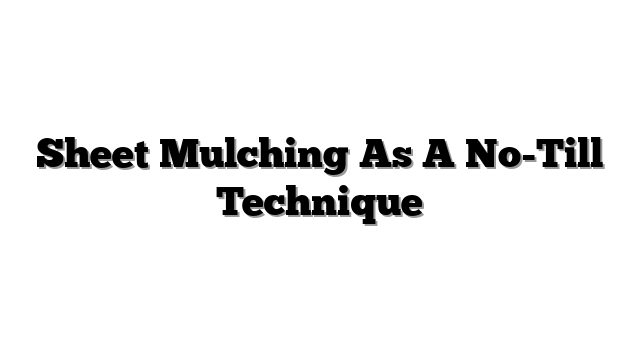No-Till Vs Traditional Gardening Methods
Digging in the garden feels like hard work. Your back might hurt. The soil feels hard sometimes. You want a garden that grows well. You want healthy plants. Is there a simpler way? A better way to garden?
Yes, there are different ways. Gardeners use two main ways. One is traditional gardening. It often means digging the soil. The other is no-till gardening. You do not dig the soil much. It builds soil life instead.
This article helps you choose. We compare these garden methods. We look at how they work. We see how they affect soil health. We check how much work they need. We discuss nature’s help. Find the right method for your garden. We look at what works well now. We talk about garden goals in 2025.
We will talk about why people dig. We see how soil works. We compare the work needed. We see how nature fits in. Then you can pick a way.
Understanding Traditional Gardening Methods
Many gardeners dig their soil. This is traditional gardening. People often dig every year. Sometimes they dig more often. They use tools to mix the soil. Shovels work. Garden forks help. Machines called tillers are common.
Why do people dig? They want soil ready to plant. Digging makes a smooth top layer. This helps small seeds start. People also mix things in. They add compost. They add plant food. Digging mixes these things fast. It helps bury weeds too. This makes the garden look clean. This is a quick start.
Think about the tools. A shovel turns the soil over. A garden fork loosens it. A tiller machine has blades. The blades spin fast. They break up the soil. They mix everything together. People add soil amendments this way. Compost goes in. Fertilizer goes in. Digging mixes them deep.
This digging feels helpful. It loosens hard soil fast. You can plant right away. You mix in compost quickly. Annual weeds get buried. The soil looks fine and ready. These are short-term benefits.
But digging has a hidden cost. It changes the soil below. It breaks apart soil structure. It harms tiny soil life. This sets the stage for other problems.
Here is how to dig a bed. First, clear old plants. Next, use a shovel or tiller. Turn the soil over. Break up big dirt clumps. Rake the top smooth. Mix in compost now. Your bed is ready for seeds.
Understanding No-Till Gardening Methods
No-till gardening is different. It means you do not dig much. You disturb the soil very little. The main idea is simple. Protect the natural soil structure. Help the soil biology grow strong.
Think about a forest floor. Nobody digs there. Leaves fall. Plants die. They pile up on top. Worms and bugs eat them. Tiny life in the soil works. They pull this stuff down. The soil gets rich and fluffy. No-till gardening copies this. Soil builds from the top.
How do we garden without digging? We layer organic matter. This is called sheet mulching. Or lasagna gardening. You put down cardboard. You add compost. You add leaves. You add straw. This builds soil over time.
We use a lot of mulch. Organic mulch is best. Straw works well. Leaves are good. Wood chips help. Compost is excellent. This layer does many things. It stops weeds from growing. It keeps water in the soil. It feeds the soil life below.
We grow cover crops. These are special plants. They grow when you are not gardening. They protect the soil. They add organic matter. Some fix nitrogen. They improve soil structure.
We plant with minimal digging. Use a small trowel. Make a hole just big enough. Put the plant in. This does not turn the soil. A broadfork is a tool. It loosens soil deep down. It does not flip the soil layers. This is minimal disturbance.
No-till offers big benefits. Soil health gets much better. Soil structure improves. Soil biology thrives. Earthworms increase. Good fungi like mycorrhizal fungi grow. Soil fertility increases naturally.
Water management improves. Soil holds more water. Water drains better too. This is from good soil structure. Soil erosion stops. Mulch covers the soil. It protects it from rain and wind.
Soil compaction is less. You do not use heavy tools. You do not walk on wet soil. Layers of hardpan do not form.
Less work happens later. You do less tilling. You water less often. You fight fewer weeds. This saves time and effort.
Healthy soil stores carbon. No-till methods add carbon. They keep it in the soil. This helps the planet.
Some challenges exist. Starting can take time. Getting materials takes effort. Tough weeds need special care. But the long-term rewards are great.
Here is a simple no-till start. Lay cardboard over grass. Add a thick layer of compost. Add straw or leaves. You can plant into the compost layer. The layers break down. They feed the soil below.
The Science Underneath: How Soil Responds
Soil looks simple. It is full of life. It has structure. Healthy soil has small clumps. These are called aggregates. Spaces exist between clumps. Roots grow in these spaces. Water moves through them. Air reaches the roots. This is crucial soil structure.
Digging breaks these clumps. Soil particles become fine. Fine particles pack together tight. This causes soil compaction. Water sits on top. Roots struggle to grow deep. No-till protects these clumps. Soil biology creates them.
Soil is a living place. Bacteria live there. Fungi live there. Mycorrhizal fungi connect to roots. Worms move through the dirt. Mites and insects live there. This is the soil food web. They work together. They make nutrients available. They fight bad germs.
Digging is like an earthquake. It breaks fungal networks. It kills many soil creatures. It disrupts their homes. No-till lets this life grow. A thriving soil food web develops. This improves soil fertility. Plants get food easily. Pests and diseases become less common.
Organic matter is key. Dead plants, compost feed the soil. Digging mixes it fast. This can burn it up quickly. Nutrients can be lost. No-till adds it on top. It breaks down slowly. Nutrients release over time. This builds stable soil fertility.
Repeated digging causes hardpan. This is a dense layer. It forms below the tilled depth. Water cannot pass through. Roots cannot grow through. This limits plant growth. No-till avoids this problem. Soil stays loose naturally. Maybe use a broadfork for deep air.
Good soil structure helps water. Water sinks into the soil. It does not run off. Soil holds moisture better. Air gets to plant roots. This is good aeration. Plants handle dry times better. Healthy soil structure does this.
Experts study soil health. They measure soil biology. They count earthworms. Studies show more worms in no-till. One study measured water flow. No-till soil absorbed rain faster. This proves better structure. Mycorrhizal fungi networks are larger. This helps plants find water. Healthy soil is a living system.
Practicalities: Labor, Time, Cost, and Productivity
Think about the work needed. Traditional gardening needs much work early. You must till or dig beds. This is hard physical labor. You might do it every year. You weed often too. The soil surface gets hard again.
No-till needs work at the start. Building beds takes effort. You gather materials. Cardboard, compost, mulch are needed. This is the main hard part. After setup, work is less. Less weeding is needed. Less watering too. No tilling is done. The work changes focus. It is more about feeding the soil.
Time is also a factor. Traditional beds are fast to prepare. You can plant in days. No-till takes more time to build. A sheet mulched bed takes weeks. It works best if you plan ahead. Full soil benefits take time. Maybe one or two years. The soil structure needs to build.
Compare the money spent. Traditional needs tools. Maybe a tiller costs money. Fuel is needed. You might buy more plant food. Soil health might drop. No-till needs materials. Compost costs money. Mulch costs money. Cover crop seeds cost money. You can find free leaves. You can make your own compost. It is often cheaper later on.
What about how much you grow? Traditional gardens can grow well. Especially with fertilizer added. Yields might go down over years. This happens if soil health is bad. No-till might start slow. First year yields might be lower. As soil health grows, yields increase. Plants are often stronger. They get sick less often. Productivity becomes more steady.
Weeds are a big part. Tilling buries weeds. Many just grow back. You must weed again and again. No-till uses mulch. Thick mulch blocks sunlight. Most weeds cannot grow. You might pull a few big ones. Cover crops also help stop weeds. Managing tough weeds needs effort. You might need to cover areas.
Healthy soil helps plants fight pests. Good soil biology makes plants strong. They can resist bugs and diseases. No-till supports plant health this way.
Think about years of gardening. Year one, traditional is fast. No-till takes more setup time. Year three, no-till work is less. Less weeding, less watering. Soil is improving. Year five, no-till soil is rich. Plants are thriving. Traditional might need more work.
We can make a simple list.
Traditional:
Much digging work.
Quick planting start.
Costs for tools, maybe more food.
Good yields early.
Weed often.
No-Till:
Setup takes work.
Less work later.
Takes time for soil to build.
Costs for compost, mulch.
Yields grow over time.
Less weeding later.
Choosing depends on you.
Environmental Impact and Sustainability
How does gardening affect nature? Tilling leaves soil bare. Wind blows the soil away. Rain washes the soil away. This is soil erosion. Fertile topsoil is lost. This harms the land. No-till protects the soil. Mulch covers the surface. Plant roots hold soil. Erosion is greatly reduced.
Healthy soil stores carbon. Carbon is in dead plants. It is in soil life. Tilling releases carbon. It goes into the air. This adds to climate problems. No-till adds organic matter. It keeps carbon in the soil. This helps fight climate change. This is carbon sequestration. This makes gardening more sustainable.
Water is precious. Good soil structure helps. Water sinks into the soil. It stays there longer. Less water runs off. You need to water less often. This saves water. This is water conservation. No-till soil holds water better. This makes gardens more resilient.
Soil has tiny creatures. Worms, bugs, microbes live there. Digging harms this life. No-till helps them thrive. It increases biodiversity in the soil. Healthy soil helps plants. It can help good bugs above ground too.
Many gardeners use chemicals. They use plant food. They use weed killers. Healthy soil provides nutrients. Healthy plants fight pests. No-till builds healthy soil. You need fewer chemicals. This is organic gardening. It pollutes less. It is better for nature.
Trends in 2025 care about nature. People want sustainable gardening. They want climate-smart ways. No-till fits this perfectly. It builds healthy ecosystems. It works well in cities. It helps community gardens. It focuses on long-term health.
Think about your garden’s footprint. How does it affect the planet? No-till helps the earth more. It keeps soil in place. It stores carbon. It saves water. It supports life.
You can see soil health improve. Count the earthworms you find. More worms mean healthier soil. See how fast water soaks in. Faster soaking is a good sign. These show better environmental health.
Choosing the Right Method & Transitioning
Which method is best for you? It depends on several things. Look at your garden size. Is it a small space? Is it a big yard? What kind of plants do you grow? Vegetables? Flowers? Raised beds?
Look at your soil now. Is it hard clay? Is it sandy? Is it already rich? No-till improves all soils. It works well in raised beds.
Think about your time. How much time can you spend? How much physical work can you do? No-till needs effort early. It saves work later. Traditional needs work every season.
Consider your money. Can you buy compost and mulch? Or do you have free leaves? Buying a tiller is a cost.
Think about your beliefs. Do you want strictly organic? Do you want low environmental impact? No-till fits these goals well.
What about weeds? Do you have tough weeds? Plants that come back every year? No-till can manage them. It might take more effort at first.
You do not have to pick just one. Some gardeners mix methods. They dig a little bit. They add lots of mulch. They use no-till in raised beds. This is a hybrid approach. You can use no-till principles. Add mulch everywhere. Grow cover crops. Even if you still dig a little.
Want to switch to no-till? You can change your garden. One way is sheet mulching. Lay cardboard on the ground. Add layers of green stuff. Add layers of brown stuff. Add compost on top. This smothers weeds. It makes new soil.
You can use tarps. Cover an area tight. This kills weeds and grass. It heats the soil. This takes many weeks.
Grow cover crops first. They improve soil. They stop weeds. Then plant into the cover crop plants.
Change slowly if you want. Dig less deep each year. Dig less often. Add more organic matter. This is a gradual transition.
No-till is easy in raised beds. You fill them with good soil mix. Then you just add compost and mulch on top. You never need to dig deep. This works well for small spaces.
Starting a new garden in 2025? This is a great chance. Start with no-till from the beginning. Raised beds are popular now. They are perfect for no-till. Healthy no-till soil holds water. This works well with modern watering. Smart irrigation systems save water.
Think about your garden. What is most important to you? Less work later? Healthier soil? Helping nature? Use these ideas to choose. Try no-till on a small spot. See how it works for you.
Here is a simple way to decide.
Do you want fast results now? Maybe traditional.
Do you want less work later? No-till saves time.
Do you care most about soil life? No-till helps it thrive.
Do you have lots of free leaves/straw? No-till uses them.
Do you have a bad back? No-till means less digging.
Do you have raised beds? No-till is easy there.
There are ways to manage weeds. Thick mulch is number one. Pull stubborn weeds by hand. Use cover crops to outcompete weeds.
FAQs
People ask questions about no-till.
Is no-till harder at first? Yes, setting it up takes effort. Gathering materials takes time. But it is less work over time. Reduced labor gardening is the goal.
How long does soil take to improve? You see changes in a year. More earthworms appear. Soil feels looser. Big changes take longer. Two or three years help a lot. Soil health keeps getting better.
How do I fight weeds in no-till? Use thick mulch layers. Cover crops help block weeds. Pull out tough perennial weeds. Prevention is key with mulch.
Can I use no-till in raised beds? Yes, absolutely. Raised beds are perfect for no-till. Just keep adding compost and mulch on top.
Will my garden grow less? Maybe slightly less at first. During the change. But long-term yield increases. Productivity goes up. This is because soil health improves. Plant health is better.
Ask yourself these questions. Find the answers here.
Conclusion
We looked at two garden ways. Traditional gardening digs the soil. It offers quick starts. But it can harm soil structure. It hurts soil life.
No-till gardening avoids digging. It builds soil from the top. This creates soil health. It supports soil biology. This leads to long-term sustainability. It means less work later.
The best way depends on you. Think about your garden. Think about your goals. Your time matters. Your physical ability matters. Many gardeners combine ideas. They use no-till principles. Even if they still dig a little.
Caring for the soil is the main thing. Healthy soil grows healthy plants. It is an ecosystem.
Think about your garden practices. Could you try no-till? Maybe in one small area? Learn more about soil health. Find other articles here. Improve your garden productivity. Grow healthier plants. It starts with the soil.



